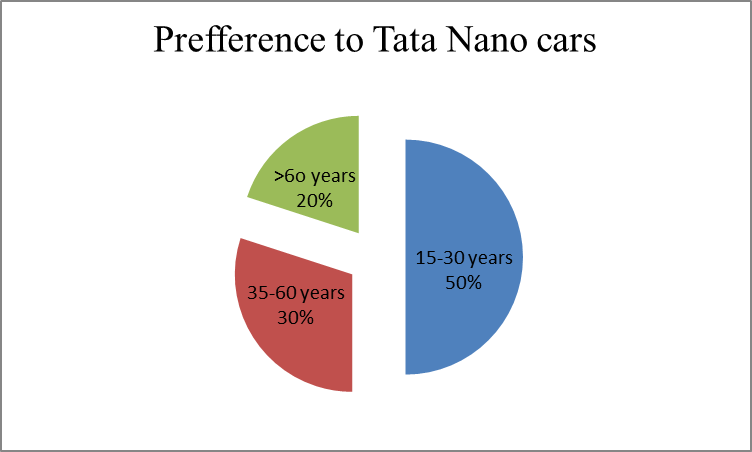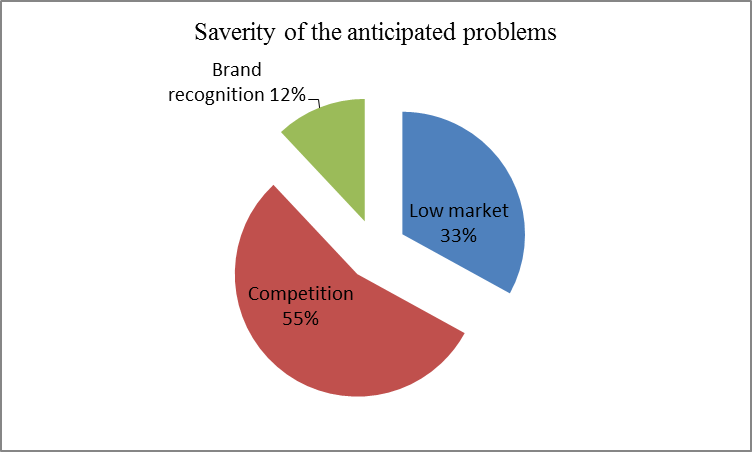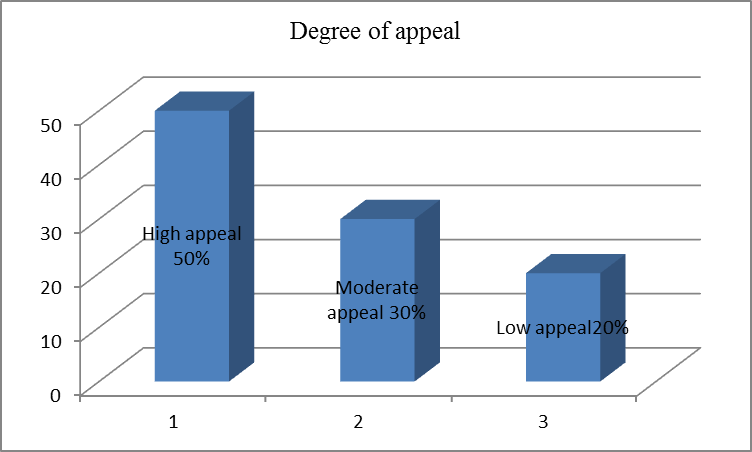Executive Summary
This report on Tata Motors Company was requested by the Corporate Head of Marketing for Tata Motors. The purpose of this report was to investigate whether or not there would be a market for their economy car, the Tata Nano, in Canada. Tata Nano has always been described as the most affordable car in the world. Tata Motors is a company located in India with its head offices in Mumbai, India’s capital city.
The research methodology that has been used in this report surveys since a sample representative of the entire population was used to gain insights on the entire population, allowing generalizations to be made. The data collected was qualitative in nature and thus the need for surveys. In the report, the finding was that the younger generation in Canada has a high demand for Tata Nano motor cars as compared to other age groups since market segmentation was age-based.
It was also found that Tata Motors will face numerous problems (e.g., competition) while entering the Canadian market. In fact, the competition was found to be the greatest problem. There was another finding that the Tata car, Tata Nano, will bring high appeal or attractiveness to the Canadian buyers.
At the tail-end of this report, recommendations have been with reference to the findings. It was noted that Tata Motors should expand into the Canadian market. It was also recommended that the Tata Motors Company should formulate strategies that will enable them to outdo the competition, and at the same time, enhance market penetration and market positioning. This report, therefore, provides key areas that Tata Motors should not overlook, but consider and implement for their success.
Introduction
This paper presents a report on Tata Motors that was commissioned and authorized by the Head of Corporate Marketing in Tata Motors. Tata Motors Company is an Indian automotive and automobile manufacturing company situated in Mumbai, India’s capital city. It is a multinational of the Tata Group founded in 1945 (Bhaktavatsala, 2008). The reason for this report was to investigate whether there would be a market for their economy car, Tata Nano, in Canada (Singhra, 2012).
The problems that triggered this report were the challenges that would face Tata Motors when it will bring its economy car to the Canadian market. From a marketing point of view, the economy car will face a myriad of challenges such as market positioning and identification of the requisite target market.
Therefore, this report discusses these problems and provides insights and recommendations on how to penetrate the Canadian market. It also proposes the marketing plan to be adopted when venturing into this new market. This project is potentially viable, but the success of it is solely dependent on the marketing strategy. The statistical data reviewed were basically secondary sources.
Study and Findings
Literature Review
Theoretical literature was reviewed in order to gain insights into the research methodology to be adopted and also to support the analysis for market entry by new entrants. According to Trauth (2001), a research methodology is basically the process used to collect data in the field, analyzing the data, and making appropriate decisions.
The techniques include surveys, interviews, observations, case studies, and previously collected research or secondary sources of information. Research methodologies are generally classified into both qualitative and quantitative approaches according to the type of information required. While developing this report, I reviewed information from scholarly sources and print sources via the methodology adopted.
Research Methodology
To develop this report, I adopted surveys as the most appropriate technique to collect the requisite information. The survey classified the demographics of the target market for Tata Motors and segmented the target market in terms of age. According to Gummesson (2000), marketing segmentation is the process of identifying a potential market, subdividing it into homogeneous segments while referring to the characteristics of the market. These characteristics can be in the form of wants, needs, or demographics of the population.
The data obtained was through the survey that was sent out to the respondents. According to Myers (2013), a survey is the administration of questionnaires to a sample, and the results from the survey are used to generalize the trends in the population. For our case, it was the preference for Tata Motors economy car, Tata Nano, among the Canadians (Lewin, 2008).
The survey aimed at establishing the preferences for Tata Nano economy motor car, among different age groups. Tata Nano has been described as the world’s most economical car due to its affordability. Information collected from the survey will be used to indicate the entry behavior of Tata Nano in the Canadian market, the potential problems it will face, and the appeal it will make to Canadian buyers.
The following was the target population for the survey, after segmenting the target market with respect to age. Therefore, the sample instrument for the survey was administered to the following respondents. The questionnaire had close-ended questions that required the respondents to tick what they felt was most appropriate.
Throughout the survey, a myriad of challenges was encountered. One of the biggest challenges was the lack of cooperation from part of the targeted population. Another greatest challenge was determining how to segment the target market. I was able to select age as the basis for segmenting the market by using the affordability for the Tata Nano motor car. I believed economic status and income levels differ in age groups (Patra, 2010).
Report Findings
The survey was administered with the aim of finding out three key issues of the Tata Nano motorcars. These included, first, the preference of Tata Nano motorcar in the Canadian market with regards to demographics of the population. Second, the problems that Tata Company would encounter when launching its product in the Canadian market. Finally, the impression the product will create to the buyers.
Preference for Tata Nano
The survey carried out revealed the information presented in the pie-chart below (data on table the 3.1).

The pie-chart above indicates the preference for the Tata Nano. It was based on the age of the target population since age was the adopted demographic for this survey. From the data analysis, it is evident that 50 percent of the target population comprising the younger generation preferred the Tata Nano motor car than any other age bracket within the target population.
Problems to FaceTata Nano
The severity of anticipated problems are presented in the pie-chart below (data on table the 3.2). As such, the car is likely to face tough competition (55%) from its substitutes. Other problems e.g., brand recognition, are insignificant.

Appeal that Tato Nano will have to Canadian buyers
With regards to appeal, results reveal that Canadians will likely purchase the car (50% of the correspondent). This is presented in the bar graph below (data on the table 3.3).

Discussion
Interpretation of the Findings
The study conducted had the aim of establishing three key components regarding the attempt to introduce the Tata Nano economy Motor Car in the Canadian market. The first key component of this was the preference for the Tata Nano economy motor car. From the results obtained from the survey, it is quite clear that from the targeted population, the youth had a high preference for this economy motor car if it was to be introduced in the Canadian market.
The preference for the Tata Nano motor car within the middle-aged group closely followed that of the youth. Their preference was at 30% for the Tata Nano economy motor car. The preference for the Tata Nano motor car was lowest within the old-aged group that was over 60 years. They exhibited a preference of 20% for the Tata Nano motor cars. These results can be attributed to factors such as income and economic level of the targeted population, and fashion as well.
The second key component that triggered the survey was the eagerness to know the different problems that would face an attempt to bring the Tata Nano motor car in the Canadian Market. The results of the survey indicated that the major problem that Tata Nano would face in the Canadian market was competition (55%), probably coming from Canadian brands such as Bombardier and the New Flyer.
The next major problem that would face the Tata Nano motor car in the Canadian market was the low market share (33%). Low market share would inhibit the growth of the market for the Tata Nano motor cars, consequently prompting the need for advertising in order to gain the requisite market share. This comes at an extra cost. The last problem that was identified was brand recognition (12%).
The last component that triggered this survey was the willingness to know any potential appeals that the Tata Nano motor car would have to the Canadian buyers. Data were collected with the aim of finding this. From the results obtained, 50% of the respondents indicated that the appeal would be high, while 30% of the respondents indicated that the appeal would be moderate, and 10% of the respondents indicated that the appeal would be low.
The explanation for the Findings
From the data interpreted above, it is evident that the Tata Nano would have a high preference for the youths than any other age group. This means if the product was to be introduced in the market. Youths should be the focus group since they would prefer the purchase of the Tata Nano cars more than any other group. This is dependent on many factors, such as income level, economic status, and fashion.
Another important finding was that among the problems that the Tato Nano would face in the Canadian market, competition would be the major problem.
This has serious implications for the marketing department of the Tata Motor Company. It means that a marketing strategy that will help outdo the competition and at the same time, assist in market penetration needs to be formulated. An example of such a marketing strategy would be an aggressive advertisement for the economy car. This again has an implication in that the Company needs to invest heavily in advertisements.
The last and the most important finding is the appeal that the Tata Nano might have to the Canadian buyers if it was to be introduced in the market. It has been found that most respondents believe that the appeal would be higher. Tata Motors, therefore, has to consider this and in fact, introduce the economy motor car in the Canadian market. High appeal promises high market share if the product is correctly launched, and the marketing strategy formulated will assist in both market positioning and market penetration.
Conclusions
To conclude this report, I have summed up the major findings. The report was aimed at finding out if Tata Nano, an economy motor car manufactured by the Tata Motor Company, which is an Indian-based company, will have a market if it was to be introduced in Canada. Literature was reviewed with the aim of establishing a theoretical background for this report. The literature reviewed included scholarly sources and print sources.
The research methodology adopted, in this case, which was the survey approach, yielded results that satisfied the prerequisites for this report. A survey basically targets a sample of the population from where generalizations are made. These surveys were administered to the target population (112 people), which had been segmented in terms of age, which was found to be the most appropriate demographic for this kind of study.
The results collected from the research instrument indicated that the Tata Nano cars would appeal to the young generation below 30 years. Therefore, marketing strategies ought to target this group. Moreover, with a 50% appeal from the Canadian market, there is a potential for business in the region. However, to increase its market share and outdo the competition, Tata Nano has to invest heavily in the advertisement.
Recommendations
My recommendations to the Tata Motor Company regarding their Tata Nano economy motor car and other aspects are as follows. First, Tata Motor Company should introduce the Tata Nano in the Canadian market since there is a market for the economy car. Second, there is a need to invest heavily in the advertisement to outdo completion. Three, the advertisement should be inclined towards the youth. Finally, risk assessment is the key to the success of any venture; therefore, Tata Motors should be conducting it periodically.
References
Bhaktavatsala, P. (2008). “Tata Motors enters into Definitive Agreement with Ford for purchase of Jaguar Land Rover.” Motor Industries, 26 (14), 45-60.
Gummesson, E (2000). Qualitative Methods in Management Research. 2nd edition, Sage, Thousand Oaks, CA.
Lewin, T. (2008). “Classic names are part of Tata deal.” Crain Communications, 34 (3), 45-46.
Myers, M. D (2013). Qualitative Research in Business & Management. London: Sage Publications.
Patra, C. (2010). “Structural Configurations and Strategic Investments: Indian Automobile Industry.” Economic and Political Journal 28 (9), 29-30.
Singhra, V. (2012). “Tatas readying new line of CVs to take on competition.” Business Journal, 14 (34), 2-3.
Trauth, E. M. (2001). Qualitative Research in IS: Issues and Trends. London: Idea Group Publishing.
Appendices
Sample Questionnaire
The following sample instrument was designed with an aim of investigating how different age groups prefer, Tata Nano economy car in Canada. The responses were treated with anonymity.
- Please tick your age.
- 15-35
- 35-60
- Over 60
- How do you prefer Tata Nano economy car?
- High
- Moderate
- Low
- What would you say is the biggest problem to face Tata Nano in Canadian market?
- Competition
- Brand recognition
- Low market share
- How will Tata Nano economy motor car appeal you?
- Highly
- Moderately
- Lowly